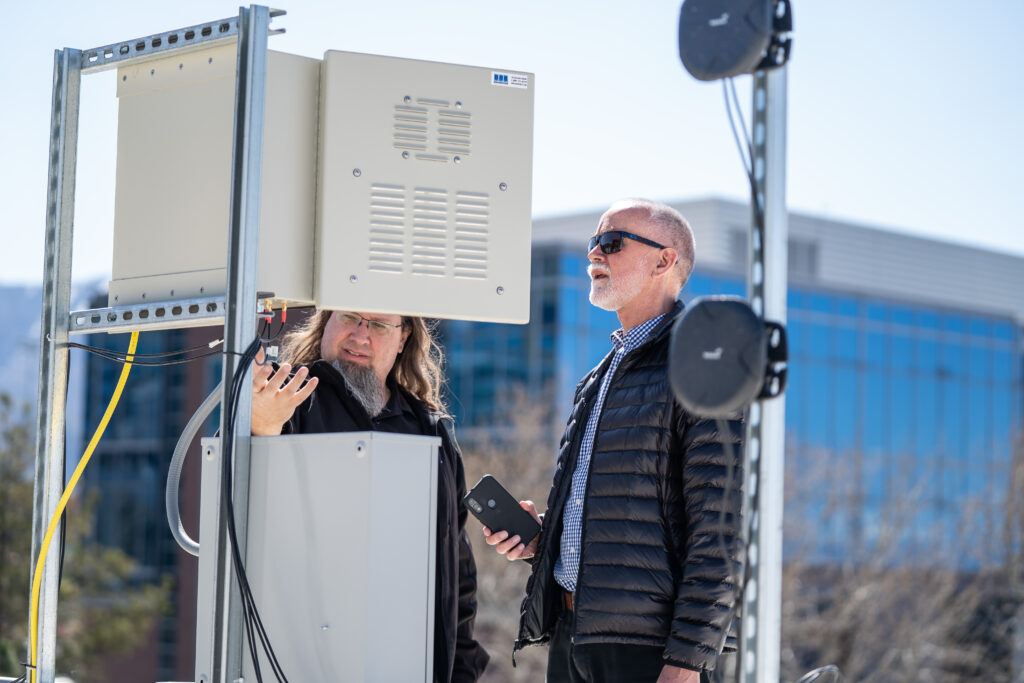Thanks to a new collaboration with global design, emulation and test solutions company, Keysight Technologies, the University of Utah’s POWDER platform will use digital twin technology to simulate end-to-end 5G and open radio access network (Open RAN) networks, enabling industry stakeholders and researchers to test their communications applications and technologies.
“We have developed a sophisticated testing orchestration framework in POWDER, and combining that with Keysight’s testing tools, enables automated testing of 5G and beyond systems,” said University of Utah Kahlert School of Computing Professor Kobus Van der Merwe, who is leading the POWDER platform. “You figure out what you want to do ahead of time, and you hit a button, and the framework runs all of the tests.”

“I am excited to see POWDER leverage Keysight’s solutions to take their wireless research in the areas of Open RAN and 5G to the next level,” said Kalyan Sundhar, Vice President and General Manager of Keysight’s 5G Edge to Core group, “Our unique end-to-end network emulation offers researchers the opportunity to test and observe the capabilities of Open RAN equipment in the lab before real world testing. Keysight’s automated solution enables continuous Open RAN evaluation on POWDER, whether it’s for edge-to-core testing or validating RAN Intelligent Controllers and Open RAN use cases. Kobus and his team now have advanced tools to make their Open RAN testing orchestrated, repeatable, quick, and efficient.”
More than three years ago, the University of Utah and Rice University launched POWDER, one of the world’s largest testbeds for advanced wireless communications research. The platform covers an area on and around the University of Utah campus, creating a go-to testbed for current and future wireless technologies such as 5G and 6G.
This dynamic and powerful lab uses custom software on general-purpose hardware, known as software-defined radios, to establish how a communication network functions. Depending on a researcher’s requirements, the testbed configuration could mimic any kind of cellular or wireless network and even use spectrum that is currently not available commercially.
POWDER users will now be able to use at least three of Keysight’s testing tools: CoreSim, which simulates a mobile core network; RuSIM, software that can simulate radios and radio traffic such as cellphones and Internet of Things devices; and RICtest, which emulates RAN equipment to allow for the testing of RAN Intelligent Controllers (RICs). Van der Merwe said he and his team are exploring using other Keysight testing tools as well.
Using Keysight’s software and services, POWDER can now provide additional services to platform users that were not there before.
“If you think of POWDER, we did end-to-end testing. But a lot of our components are open-source and so it was geared toward university researchers who want to do fundamental research,” Van der Merwe said. “Now, we can offer researchers additional testing features we didn’t have before and allows us to expand our services for industry and government institutions.”
Since the outdoor lab launched in 2018, more than 650 users have conducted over 12,000 experiments involving more than 150 separate projects, Van der Merwe said. These projects are not only with leaders in the telecommunications industry but also with the world’s top research institutions, including collaborations with the U.S. Department of Energy’s Idaho National Laboratory.